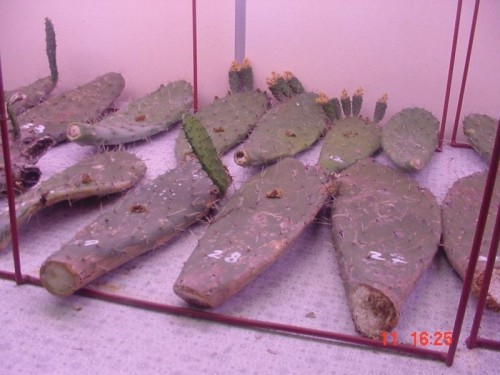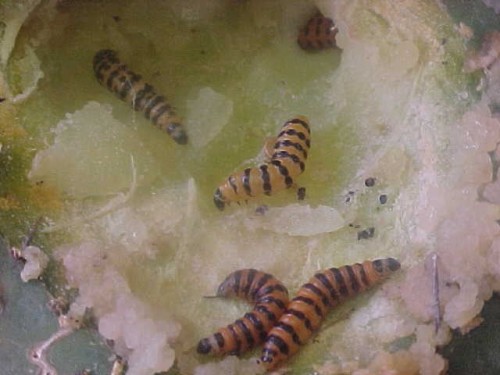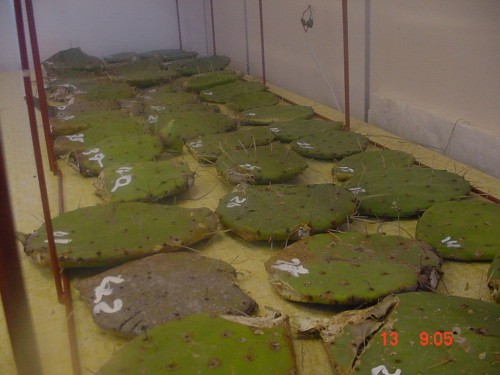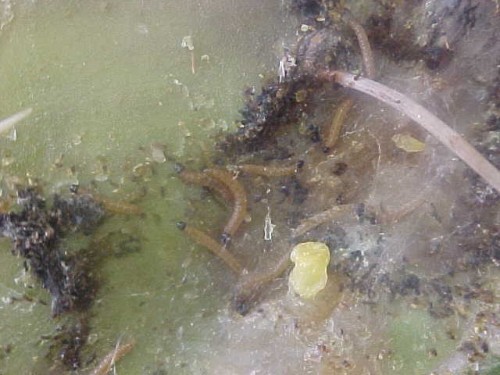2020, Vol. 1, Issue 1, Part A
The effect of colony size on the establishment of feeding activity of Cactoblastis cactorum larvae on cactus plants

Fig. 1: Cladodes of O.ficus indica with frass mounds are containing actively feeding larvae of C. cactorum

Fig. 2: Well-developed larvae of C. cactorum dissected out of the cladodes that were successfully attacked

Fig. 3: Cladodes of O.lindheimeri infested at the same time as the O. ficus indica shown in Figure 2 but showing no signs of C. cactorum larvae feeding activity.

Fig. 4: Retarded larvae of C. cactorum subsisting on the surface of a O. lindheimeri.cladode. These larvae were of the same age as those shown in Figure 3




